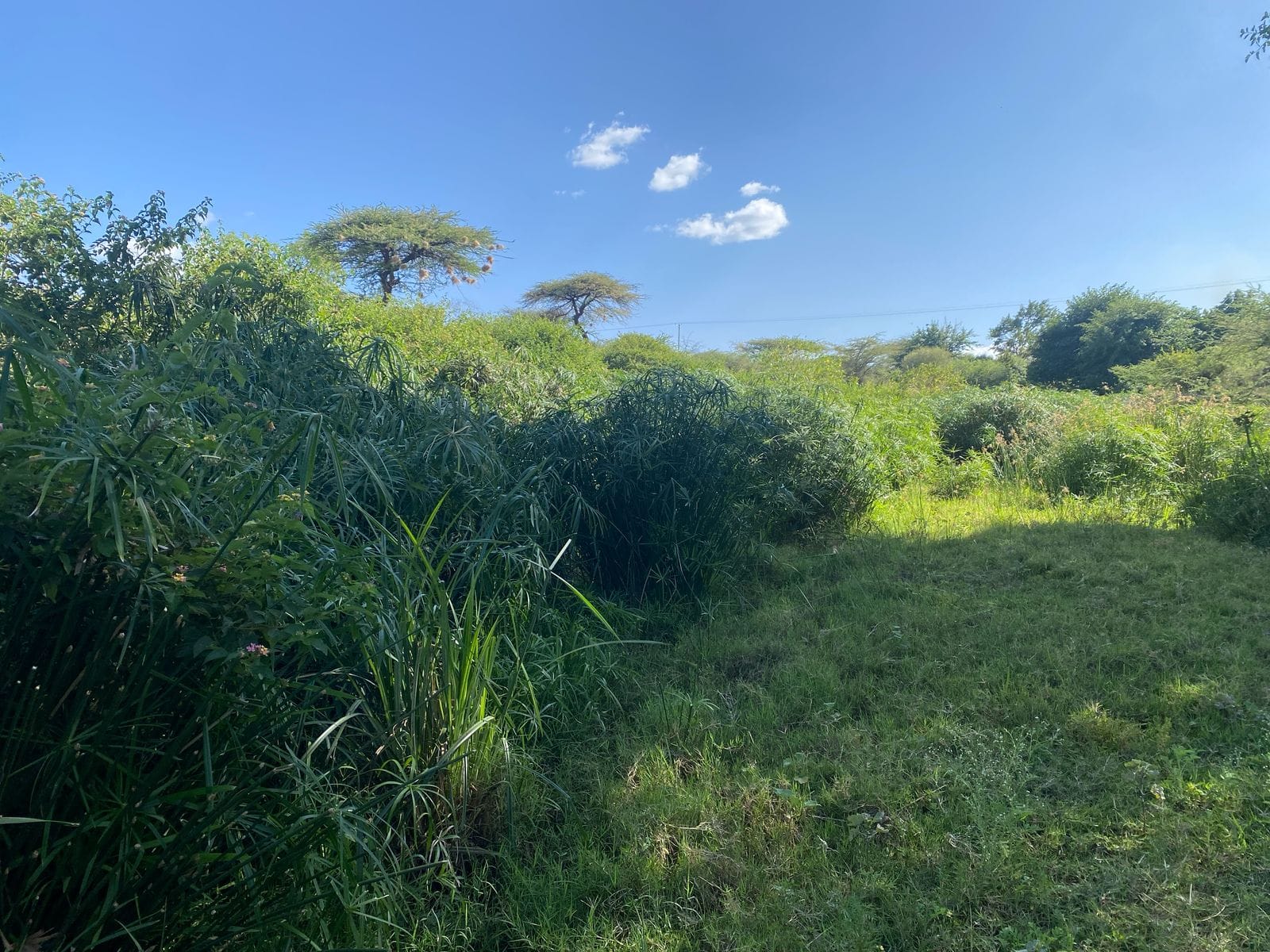
Nestled in the arid landscapes of Isiolo County, where water is not just a necessity but a lifeline, two springs (Darajani in Leparua and Nomad-Esmit in Nasuulu) are reclaiming their vitality, not through external intervention alone, but through the dedication and stewardship of the very communities they serve.
These aren’t just springs. They are the heartbeat of ecosystems, the memory keepers of culture, and the silent providers for people and wildlife. But years of degradation, encroachment, and neglect have left them gasping. Until now.
A Community Rising: The Leparua Story
In the village of Maili Saba, where the Darajani Spring once flowed generously into the Kisima River, hope is trickling back; quite literally. Thanks to a joint effort between CETRAD, CABI, and local communities under the Native Plants for Environment and People (Native PEP) project—an initiative implemented by CABI, Biovision Africa Trust, the University of Nairobi, CETRAD, and TAFORI in Tanzania. Darajani is being fenced off and restored, one post and one tree at a time.
The spring, shared by the Turkana, Meru, and Samburu communities of Nguisero and Nabenyo, had suffered under the weight of overuse and human encroachment. But things are changing. In February, 15 local community members, handpicked by the spring committee, rolled up their sleeves to dig holes, mix concrete, and erect a protective fence. It wasn’t just about poles and wire; it was a statement of ownership and responsibility.
Now fenced and guarded, Darajani is being prepared for its next phase: ecological restoration. Native tree species are slated for planting, but first, an old nemesis must be tackled, Lantana camara, an invasive species that’s choked the life out of many indigenous plants. Clearing it is step one; bringing back native trees is step two.
But the community isn’t stopping there.
They’ve proposed turning the area into a thriving beekeeping zone. With the natural vegetation poised for a comeback, it’s the perfect spot for hives. Honey, they hope, will not only sweeten their tea but also their income streams.
Elsewhere in Leparua, green dreams are already sprouting. CETRAD has provided seeds for native grasses and legumes, and what started as a two-acre plan has blossomed into five acres of community-donated land. A local committee now oversees the planting and monitoring of species like Cenchrus, Cyanodon, Indigofera, and Rhynchosia—a step toward climate-resilient fodder and restored rangelands.
The Salty Spring of Nasuulu: Healing with Bamboo and Native Plants
Meanwhile, in the neighboring Nasuulu Conservancy, the Nomad-Esmit Spring tells a slightly different story; one of salt and resilience. Its waters are saline, its soil tricky, but the people are just as determined.
With support from stakeholders, the Nomad-Esmit spring committee has been rallying to mend broken fences and shield the riparian zone from further damage. Their vision goes beyond just protection, they want to revive this spring through knowledge and culture.
The plan? Bamboo for erosion control, salt-tolerant trees, and a ripple effect of awareness that empowers everyone from the elders to the youth. Importantly, the community wants to plant species that carry cultural and medicinal value; rooting restoration in tradition.
To make this vision a reality, the community is partnering with Osinoni Gardens to source the right plants and build capacity in riparian restoration techniques. It’s not just about planting trees; it’s about planting responsibility. Strengthening local institutions like Water Resource Users Associations (WRUAs) and Spring Management Committees is key to ensuring that protection of these springs becomes second nature.
A New Way Forward
Across both conservancies, one truth stands out: restoring springs is not a technical activity; it’s a community revolution. It’s women, men, and youth showing up not because they were paid, but because they care. It’s meetings under acacia trees, labor under the hot sun, and ideas that stretch from today into tomorrow.
With every tree planted, every fence post secured, and every bee that buzzes into a new hive, the people of Leparua and Nasuulu are doing something quietly revolutionary; they are taking back their springs. For water. For life. For future generations; because when water flows, so does hope.
Prepared by Simon Njoroge
DO YOU HAVE A
QUESTION?
+254 719 052 113
Send us an
email?
info@nativepep.org

To improve rural livelihoods in East Africa by selecting and using native plants for land regeneration and community forests within a holistic and sustainable land use approach.
To strengthen livelihood security and environmental health in selected regions in Kenya and Tanzania affected by rangeland degradation, deforestation, and invasive alien trees.
Kenya
Tanzania
Northern Tanzania in Arusha Region and adjacent areas in Kilimanjaro (Hai District) and Manyara Regions (Simanjiro District), mainly covering a belt from Lake Manyara to Arusha and Moshi (Kilimanjaro Region).
Copyright © 2023, Nativepep.org. All Rights Reserved.